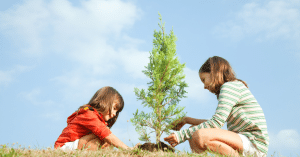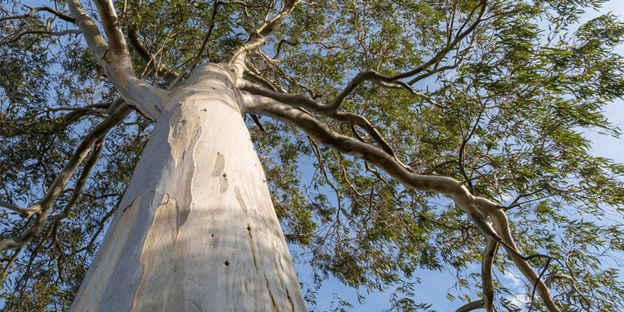A word from the Sustainable Agriculture Facilitator (July 2025)
Each year, Australians come together to celebrate National Tree Day, the country’s largest community driven environmental initiative. Held on the last Sunday of July, with Schools Tree Day on the preceding Friday, this event is a reminder of the role trees play in sustaining life, supporting biodiversity, and enriching our landscapes.
Founded in 1996 by Planet Ark, National Tree Day has grown into a nationwide movement. Since its inception, over 27 million native trees, shrubs, and grasses have been planted, and more than 5 million volunteers have participated in planting events across Australia. The initiative has supported the regeneration of thousands of hectares of land, from urban parks to rural paddocks.
Trees are fundamental to the health of ecosystems and the preservation of biodiversity. They provide habitat for birds, mammals, insects and fungi, and support pollinators and beneficial insects that are vital to agriculture. Trees also store carbon, helping to mitigate climate change, and their root systems stabilize soil and improve water retention, reducing erosion and enhancing land productivity.
In agricultural landscapes, paddock trees (large, isolated trees found in grazing or cropping paddocks) play a particularly important role. These trees offer shade and shelter for livestock, reducing heat stress, and improving animal welfare. They act as stepping stones for wildlife, allowing species to move across fragmented habitats and maintain genetic diversity. Paddock trees contribute to soil health through leaf litter and root systems that enhance nutrient cycling and water infiltration. They also support farm biodiversity by providing habitat for birds, insects, and other beneficial organisms.
Despite their ecological value, paddock trees are in decline due to aging, lack of regeneration, and land clearing. This is especially concerning in Australia, where over 1,900 species are listed as threatened under the Environment Protection and Biodiversity Conservation Act, and more than 70 percent of these are plant species. Protecting and regenerating paddock trees is essential, not only for sustainable agriculture but also for the long-term resilience of our natural landscapes.
 Tree planting tips for success
Tree planting tips for success
- Choose the right tree: Select native species suited to your local soil, climate, and purpose
- Prepare the site: Clear weeds, dig a wide hole, and loosen the soil
- Plant properly: Keep the root collar at ground level and firm the soil gently
- Water well: Water deeply after planting and regularly during the first year
- Protect young trees: Use guards or fencing to prevent damage from animals or machinery
- Monitor and maintain: Check for pests, weeds, and water stress. Replace any losses
This year, National Tree Day falls on Sunday July 27 2025, and Schools Tree Day on Friday July 25. Planting a tree is a simple yet powerful act of environmental stewardship.
By participating, you are not just planting a tree, you are helping restore ecosystems, protect threatened species, and build a more sustainable future.
This article was written by Jade Auldist. Jade is the Sustainable Agriculture Facilitator for the Riverina region. Her role supports farmers, industry and community groups (including Landcare Groups) to adopt new and innovative sustainable agriculture practices.
For further information on this article, please contact Jade at jade.auldist@lls.nsw.gov.au.







